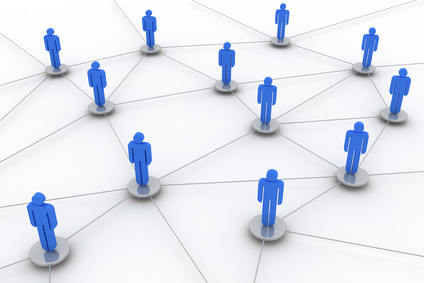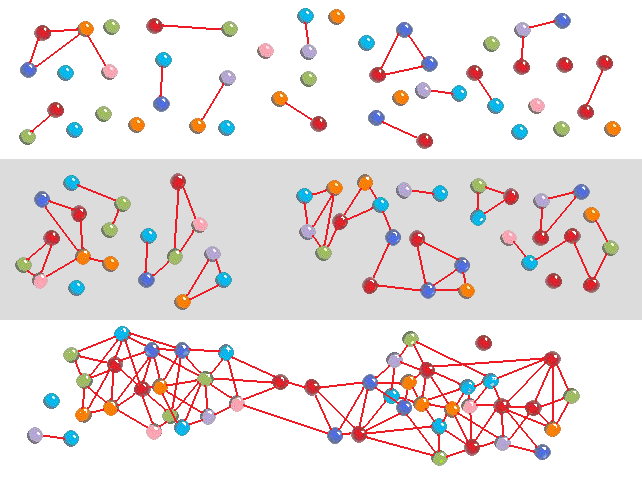How Ideas Spread
Today, let's talk about engineered social networks. The University of Houston Mathematics Department presents this program about the machines that make our civilization run, and the people whose ingenuity created them.
The chain of acquaintances between two typical people in the world is not very long. So why do contagious diseases not always spread across the globe? The reason is that not all acquaintances are equal: A person with the flu is much more likely to infect people they interact with daily than a former high school friend. How we interact, not only who we interact with determines how epidemics spread.
Ideas and behaviors also spread through social networks. Suppose a friend recommends a movie to you. Will you go see it? This depends on how much you trust her opinion. The number of friends that recommend the movie is also important. To know how a movie recommendation spreads through social interactions, it is important to understand the dynamics and structure of social networks.

https://www.flickr.com/photos/carloszardoya/5466335755/in/photostream/
But how can we study the propagation of something as intangible as ideas? Even twenty years ago this would have been difficult. Fortunately, online social networks offer an excellent opportunity for scientists to do so. This has been beautifully demonstrated by Damon Centola of Harvard University. He recruited unknowing participants to a slick looking health website he designed. As people signed up for the site, they were assigned to one another as 'health buddies'. Centola controlled these assignments, and could thus shape the emerging network of interactions.
These engineered social networks gave some interesting insights into how ideas can spread. Centola asked a few selected people in the network to join a health discussion forum. Every time a person joined, all their health buddies were invited as well. But members could only receive an invitation if one of their buddies had joined. Hence invitations travelled from buddy to buddy. But remember that Centola assigned the buddies at the beginning of the experiment.
Interestingly, members joined the health forum most quickly in networks where buddies were clustered: A network is clustered if two of your friends are likely to be friends with each other. To see why this is surprising, suppose that you pass a message to a friend, and ask her to pass it along to all of her friends. In this case, the message will propagate through an unclustered network more quickly than through a clustered network. So why do behaviors spread more quickly in clustered networks? As with movie recommendations, we sometimes need to hear a message multiple times in order to pay attention to it. And clusters of friends are very good for this. Messages can reverberate within the groups.

Scientists are starting to understand how ideas and behaviors spread between us. We could use this knowledge to get people to lead healthier lives and adopt behaviors beneficial to the environment. But these insights could also be used to market products and shape political opinions. Indeed we are already being subtly manipulated to share certain information with our online friends. Such manipulations of social networks may be virtually invisible to the participants, yet have a major effect on how we think, behave and view the world.
This is Krešo Josić at the University of Houston, where we are interested in the way inventive minds work.
A nice discussion of the six degrees of separation can be found on Wikipedia https://en.wikipedia.org/wiki/Six_degrees_of_separation. It is hard to know how many degrees separate two random individuals on average.
Krešimir Josić's Blog or follow kjosic on Twitter.
This episode was first aired on July 27, 2012